


















Martin's Mars- the largest flying boat ever to enter production
By Willie Bodenstein
Originally designed during WWII as a patrol bomber for the U.S. Navy the Martin Mars was the largest Allied flying boat ever to enter production.

The prototype XPB2M-1 Mars patrol bomber, a scaled up version of the Glenn L. Martin Company PBM Mariner, was launched on 8 November 1941. She first flew on 23 June 1942 but because of delays and flight testing was only ready for service on 30 November 1943 by which time, as a patrol bomber, she was obsolete.

Martin then converted her into a transport aircraft and the United States Navy (USN) ordered twenty of the behemoths. The first completed JRM-1 Mars was delivered to the USN in June 1945 but was lost in an accident on Chesapeake Bay a few weeks after it first flew. By then the war was over and the Navy took up only the remaining five production aircraft, using them to ferry cargo to Hawaii and the Pacific Islands.

The Marshall Mars was lost on 5 April 1950 near Hawaii because of an engine fire. The crew evacuated safely. The remaining four, the Marianas Mars, Philippine Mars, Marshall Mars and Caroline Mars flew huge amounts of naval cargo on the San Francisco-Honolulu route until 1956 when they were withdrawn from service and beached at the navy air station at Alameda.

During 1959 it was decided to sell the four as scrap. Fortunately Forest Industries Flying Tankers (FIFT), a Canadian company representing a consortium of British Columbia forest companies, submitted a successful bit for the four and the spares and in early 1960 the aircraft were flown to Victoria in Canada where Fairey Aviation was contracted to convert them into water bombers.

Conversion of the Mars into a water bomber involved the installation of a tank able to carry 30 tons of water (7,200 U.S. gallons; 27,276 litres) in the cargo bay. The water is taken on board via retractable pick-up scoops while the aircraft taxi and can be filled to capacity in approximately 22 seconds. Provision was almost made for tanks able to carry 600 U.S. gallons (2,270 litres) of foam concentrate. Each drop of water and foam gel mix can cover an area of up to 4 acres (1.6 hectares).

Forest Industries Flying Tankers (later TimberWest Forest Ltd) initially only converted the Marianas and Caroline Mars into water bombers. They operated extensively fighting fires around the province. On 23 July 1961 the Marianas crashed with the loss of the crew during a water bombing sortie in British Columbia. On 12 October 1962 the Caroline Mars was damaged beyond repair by Typhoon Freda while parked onshore. The Hawaii Mars and Philippine Mars entered service in 1963.

TimberWest Forest Ltd. Announced on 10 November 2006 that the last two remaining Mars Aircraft were for sale. A condition of the sale was that at least one of the aircraft was to be donated to the Maryland Aviation Museum in British Columbia. On 13 April 2007, TimberWest announced that the bid submitted by Coulson Forest Products, a local forestry company in Port Alberni, British Columbia was successful and the Hawaii and Philippine Mars were given a new lease on life.

Coulson operates the Hawaii and Philippine Mars from their base at Sproat Lake near Port Alberni. The Hawaii Mars operated throughout Canada and the continental United States whilst the Philippine Mars underwent extensive maintenance and renovation. On 23 August 2012 Coulson announced that due to its lack of use the Philippine Mars would be retired and flown to the National Naval Aviation Museum at Naval Air Station Pensacola, Florida to become a static exhibit. As of 10 October 2016 the transfer has not taken place.
On 10 May 2013, the B.C. provincial government announced that the Hawaii Mars would no longer be placed on contract after the 2013 season. However, in 2015 she was awarded a 30-day contract from the BC Government to help with a particularly bad fire season and during May 2015 Mars received a small contract to be used briefly for training Chinese pilots.


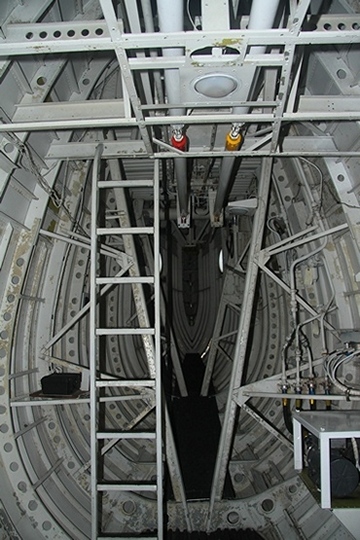

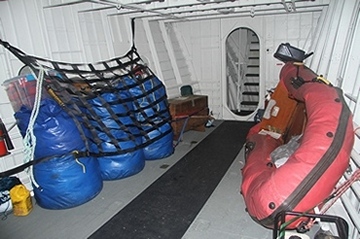
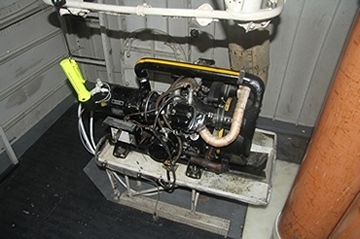
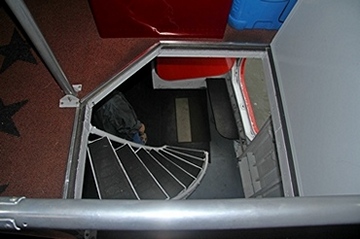
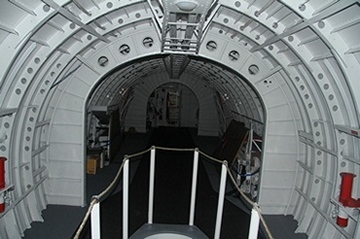

At anchor at the Sea Plane Base during EAA AirVenture Oshkosh 2016 we had the opportunity to go on board thanks to Anne and Paul for what was a once in a lifetime guided tour of this behemoth. The Mars was one of the crowd favourites during the afternoon airshows. Unfortunately she was damaged when her fuselage was ruptured by rocks during a precautionary landing on Lake Winnebago.

The fate of the world's largest production amphibian now rest solely on the shoulders of the Mars, the only remaining airworthy example.

The prototype XPB2M-1 Mars patrol bomber, a scaled up version of the Glenn L. Martin Company PBM Mariner, was launched on 8 November 1941. She first flew on 23 June 1942 but because of delays and flight testing was only ready for service on 30 November 1943 by which time, as a patrol bomber, she was obsolete.

Martin then converted her into a transport aircraft and the United States Navy (USN) ordered twenty of the behemoths. The first completed JRM-1 Mars was delivered to the USN in June 1945 but was lost in an accident on Chesapeake Bay a few weeks after it first flew. By then the war was over and the Navy took up only the remaining five production aircraft, using them to ferry cargo to Hawaii and the Pacific Islands.

The Marshall Mars was lost on 5 April 1950 near Hawaii because of an engine fire. The crew evacuated safely. The remaining four, the Marianas Mars, Philippine Mars, Marshall Mars and Caroline Mars flew huge amounts of naval cargo on the San Francisco-Honolulu route until 1956 when they were withdrawn from service and beached at the navy air station at Alameda.

During 1959 it was decided to sell the four as scrap. Fortunately Forest Industries Flying Tankers (FIFT), a Canadian company representing a consortium of British Columbia forest companies, submitted a successful bit for the four and the spares and in early 1960 the aircraft were flown to Victoria in Canada where Fairey Aviation was contracted to convert them into water bombers.

Conversion of the Mars into a water bomber involved the installation of a tank able to carry 30 tons of water (7,200 U.S. gallons; 27,276 litres) in the cargo bay. The water is taken on board via retractable pick-up scoops while the aircraft taxi and can be filled to capacity in approximately 22 seconds. Provision was almost made for tanks able to carry 600 U.S. gallons (2,270 litres) of foam concentrate. Each drop of water and foam gel mix can cover an area of up to 4 acres (1.6 hectares).

Forest Industries Flying Tankers (later TimberWest Forest Ltd) initially only converted the Marianas and Caroline Mars into water bombers. They operated extensively fighting fires around the province. On 23 July 1961 the Marianas crashed with the loss of the crew during a water bombing sortie in British Columbia. On 12 October 1962 the Caroline Mars was damaged beyond repair by Typhoon Freda while parked onshore. The Hawaii Mars and Philippine Mars entered service in 1963.

TimberWest Forest Ltd. Announced on 10 November 2006 that the last two remaining Mars Aircraft were for sale. A condition of the sale was that at least one of the aircraft was to be donated to the Maryland Aviation Museum in British Columbia. On 13 April 2007, TimberWest announced that the bid submitted by Coulson Forest Products, a local forestry company in Port Alberni, British Columbia was successful and the Hawaii and Philippine Mars were given a new lease on life.

Coulson operates the Hawaii and Philippine Mars from their base at Sproat Lake near Port Alberni. The Hawaii Mars operated throughout Canada and the continental United States whilst the Philippine Mars underwent extensive maintenance and renovation. On 23 August 2012 Coulson announced that due to its lack of use the Philippine Mars would be retired and flown to the National Naval Aviation Museum at Naval Air Station Pensacola, Florida to become a static exhibit. As of 10 October 2016 the transfer has not taken place.
On 10 May 2013, the B.C. provincial government announced that the Hawaii Mars would no longer be placed on contract after the 2013 season. However, in 2015 she was awarded a 30-day contract from the BC Government to help with a particularly bad fire season and during May 2015 Mars received a small contract to be used briefly for training Chinese pilots.









At anchor at the Sea Plane Base during EAA AirVenture Oshkosh 2016 we had the opportunity to go on board thanks to Anne and Paul for what was a once in a lifetime guided tour of this behemoth. The Mars was one of the crowd favourites during the afternoon airshows. Unfortunately she was damaged when her fuselage was ruptured by rocks during a precautionary landing on Lake Winnebago.

The fate of the world's largest production amphibian now rest solely on the shoulders of the Mars, the only remaining airworthy example.
 |
 |
 Copyright © 2024 Pilot's Post PTY Ltd
The information, views and opinions by the authors contributing to Pilotís Post are not necessarily those of the editor or other writers at Pilotís Post.
Copyright © 2024 Pilot's Post PTY Ltd
The information, views and opinions by the authors contributing to Pilotís Post are not necessarily those of the editor or other writers at Pilotís Post.